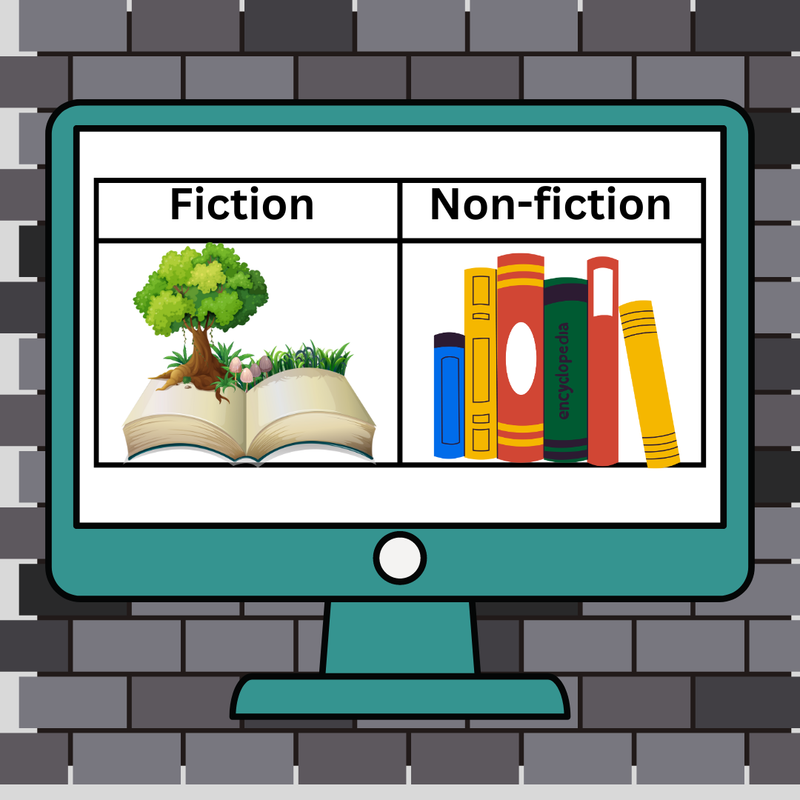Fiction or Non-Fiction?

ELAL Learning Outcome (Knowledge) - Messages can clarify ideas and information that are imaginary (fiction) or real (non-fiction).
This lesson allows teachers and students to view and discuss media samples, both fiction and non-fiction, with the goal of identifying elements that distinguish the two types. Students will examine the text as well as the audio and visual elements that support their views on what makes the sample fiction or non-fiction.
Lesson:
Objective: Students will identify and discuss what elements within a variety of media samples, including images, video, audio, and text, distinguish fiction from non-fiction media samples.
Media samples:
There are many samples available and teachers could even use samples from online reading programs that they already use with their students, like Reading A-Z. I have chosen two samples from Youtube.
Key Questions:
What words in the text of the video tell you this is a fictional story? Or non-fictional? Do the colours or the types of images give you any clues? What about the background music? How about the voices in the two samples - do they give us clues? Are there any other elements that give us clues to help us determine whether the sample is fiction or non-fiction?
Activity:
In pairs, students look at two assigned samples from Reading A-Z and discuss three elements that help them to decide whether the samples are fiction or non-fiction. Have them look for words and images in this case, and if they are listening to the story, have them comment on the voice. Alternately, other samples could be chosen from Youtube by the teacher.
Followup:
The concepts of distinguishing fiction from non-fiction should be reviewed regularly, in examining all of our viewing. This reinforces key words, images, and other elements found in each of the two types of samples, helping students to better comprehend their viewing.